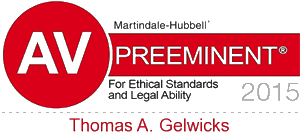Railroad Crossings Remain a Threat to Motorists
Train-vehicle accidents continue to be a problem in the United States, involving both fatalities and injuries. Locomotives crash into vehicles or pedestrians, despite improvements in signage at many railroad crossings.
Every 2 hours in the US, a railroad accident takes place which involves a vehicle or a pedestrian being struck by a train, according to the Federal Railroad Administrator’s Office of Safety Analysis. And each year, nearly 2,000 of these people are fatally injured.
Many of the losses are the result of individuals trespassing on railroad right-of-way property. Other rail-vehicle crossing accidents are because of train mechanical failures or track defects. The remainder, that are not caused by human error (about one-third of the total), are generally the result of negligence signal alert systems.
Uneven Distribution of Train Warning Systems
There is a surprising lack of uniformity in Ohio as to the type of train warning system motorists can expect at any given railway-vehicle crossing.
Studies by the US Department of Transportation (DOT) have repeatedly shown that proper traffic control devices reduce tragic incidents. Beyond that, engineers disagree as to which variety of traffic control system is best-suited for a particular railroad crossing. This issue is greatly complicated by the cost-benefit analyses which are offered by state and federal authorities.
Active, electronic traffic control devices are much more costly to install and maintain. And because they are subject to malfunctioning, their cost during periods of non-function needs to be factored into the tax dollars expenditure equation.
Some railroad crossings are little used and may have merely passive signs, such as the common buck signal. This is in contrast to the more frequently used crossings. They properly warn of trains; many have flashing-light signals and automatic gates. These usually possess supplemental devices such as warning signs with flashers. In areas with above-normal pedestrian and bicycle traffic, swing gates and pedestrian barriers with pavement markings will often be found.
It is noteworthy that about one-half of railroad crossing fatal accidents take place at crossings with passive, inadequate alert devices. Even though the crossings have far less daily traffic, the death rate is high because of the inadequacy of the alert system.
The Human Dimension in Train-Vehicle Tragedies
Train detection systems are required to provide a minimum of 20 seconds of warning. It is very ironic that railroad crossings which provide increased warning time are sometimes even more dangerous. Why is this? It is because drivers perceive the alert system gives them a longer period to drive their car or truck over the crossing. Social scientists have called this the “cry wolf” effect of train-vehicle crossings. Overconfidence is instilled, with deadly consequences to the driver and their passengers.
Railroad safety specialists tell us that during daylight hours, nearly three-fourths of the wrecks are of the train striking the vehicle. However at night, about half the time it is the road vehicle which runs into the train. Numerous theories have been advanced to explain this phenomenon.
The Interrelationship Between State and Federal Laws
Federal law preempts state law if federal funds are spent on the railroad crossing devices. For many years, railroad crossings were always argued by the defendant railroad companies to have benefited, in some manner, by federal largesse. This was an understandable tactic since Congressional enactments insulated the federal government and other parties. Other defendants would argue they also had no duty to install and maintain adequate warning devices. And state legislatures, for too many years, intended to absolve railroads of all responsibility for warnings at crossings.
Railroads have always had a common law duty to provide warnings. This is appropriate, since railroads have superior knowledge about collisions at particular crossings. Their statistics help to reveal patterns to them.

